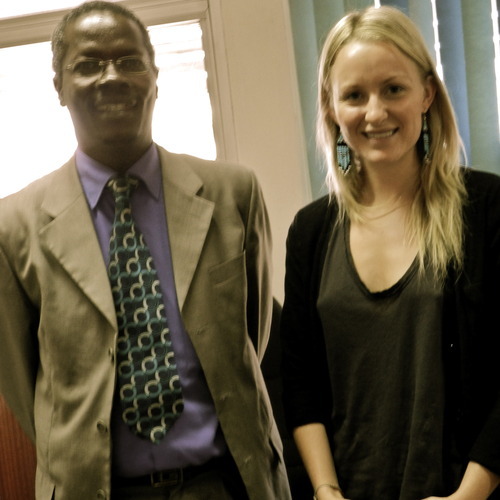
Dr. Kinya is a Senior Librarian and Lecturer at the Africa Nazarene University, and one of the few academics in East Africa with a research focus on libraries, be they government school or community centred. I kept coming across his reports as I researched data on library standards and policies in Kenya, and finally reached out for a meeting.
Confirming what I had found, he told me that there is little to no research conducted on libraries in East Africa, and no National Policy to speak of. This is a limitation he and a few likeminded colleagues are trying to address, by researching and developing set standards and procedures for African libraries, and particularly, for Kenyan libraries.
Dr. Kinya gave me fantastic advice concerning the Foundation’s Library Program, which given his experience and achievements, is a gift. He explained the difference in the ideal collection for primary schools versus secondary schools in Kenya. At the primary school level, he said, books should be of the type to attract students to reading. In Kenya, a primary school collection should be at least 50 percent Kenyan, telling local stories, using local concepts. This, he argued, isn’t simply because students will be more comfortable with those stories (which he said is true). Rather, it shows them, and reinforces the idea that their society acknowledges, appreciates, and celebrates their local culture and way of life. He also said it was important to include books that promote nationalism, celebrating the Kenyan national identity and what it means. Indeed, a certain portion (30 percent) of the books should be international children’s classics, but he believes that a local collection linkup is more important for primary curriculum support than secondary, where these ideas are already shaped.
For a secondary school collection, he said that 50 percent of the books should be tailored to the curriculum, which would effectively render a significant portion of that local. It is also incredibly important, he argued, to make sure that a portion of books are included to introduce the students to the academic world. In secondary schools, they start to teach students how to analyze and think critically, and to do this they need the resources – the books. This is also true of specializations, which are introduced at the secondary school level. Books need to be provided to support this, be it law, biology, or farming. For classics, he made a point of emphasizing that these should not dominate a secondary school collection to the disadvantage of the curriculum. Interestingly, my own findings with the girls at Precious Blood would refute this, as they prefer and use the recreational reading books. However, for smaller district schools this advice would be very practical.
Dr. Kinya also stressed that, when designing a collection, it is paramount to take into consideration what is dominant in the community, and provide resources for that. Overall, he said, the idea is to inculcate the value of the library to the students, and if you make the collection relevant to their worldview, that will happen.